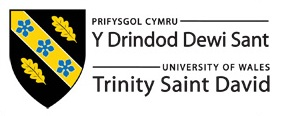
PROSTHESES IN ANTIQUITY
 30 июня 2015 г. в Университете Уэльса (University of Wales Trinity Saint David) состоится конференция «Протезы в Античности».
30 июня 2015 г. в Университете Уэльса (University of Wales Trinity Saint David) состоится конференция «Протезы в Античности».
Заявки на участие (тезисы объемом 200-300 слов) принимаются по адресу: j.draycott@tsd.ac.uk (Dr Jane Draycott) до 5 января 2015 г.
Уже подтверждено участие в конференции доктора Ральфа Джексона (Dr Ralph Jackson) (Британский музей).
Оригинальный текст:
Prostheses in Antiquity
A conference to be held at the University of Wales Trinity Saint David
(Lampeter Campus)
Tuesday 30th June 2015
In the contemporary world, a prosthesis is an artificial device that
replaces a missing body part, generally designed and assembled according to
the individual’s appearance and functional needs with a view to being both
as unobtrusive and as useful as possible. Surviving examples from Pharaonic
Egypt are in accordance with this, constructed from painted cartonnage and
showing evidence of wear. In the Graeco-Roman world, however, this was not
necessarily the case. The ancient literary and documentary evidence for
prostheses is contradictory, and the bioarchaeological and archaeological
evidence is enigmatic, but it would appear that discretion and utility were
not necessarily priorities, whether the prosthesis in question was a gold
dental appliance, or an iron hand. So when, how and why did individuals
utilise them?
Since the publication of the last (and to date only) substantial piece of
academic research devoted solely to prostheses — Lawrence Bliquez’s
‘Prosthetics in Antiquity: Greek, Etruscan, and Roman Prosthetics’ in
Aufstieg und Niedergang der Römischen Welt 37.3 — in 1996, there has been a
steady increase in interest in impairment and disability in historical
periods. While the vast majority of this interest has focused on the
post-mediaeval period, classical antiquity has not been ignored, with
medical historians, ancient historians and archaeologists utilising
literary, documentary, bioarchaeological and archaeological evidence in
order to investigate a range of aspects of impairment and disability. Yet
despite this, the use of prostheses in antiquity remains an understudied
area, and it is past time for a reassessment.
Potential areas of investigation include but are not limited to:
• Prostheses in ancient literature
• Prostheses in the archaeological record (e.g. grave goods, ritual deposition)
• Prostheses in art
• The relationship between anatomical ex votos and prostheses
• The relationship between automata and prostheses
• The technical aspects of design, production and usage of prostheses
• The purpose of prostheses (e.g. replacement, reconstruction, utility,
cosmetic etc.)
• Medicine, surgery, rehabilitation and physiotherapy
Confirmed speakers:
Dr Ralph Jackson (British Museum)
Papers should be of 20 minutes’ length, and should not have been previously
published or delivered at a major conference. Please submit your abstract
(200-300 words, either Word or PDF format) to Dr Jane Draycott
(j.draycott@tsd.ac.uk) by Monday 5th January 2015. Please include your
name, academic affiliation, and contact details in your email. Successful
contributions may be considered for publication in a peer-reviewed
conference volume.
Источник: оргкомитет.
24.09.2014Метки: Конференции
САЙТ СОЗДАН ПРИ ПОДДЕРЖКЕ РОССИЙСКОГО ФОНДА ФУНДАМЕНТАЛЬНЫХ ИССЛЕДОВАНИЙ (РФФИ), ПРОЕКТ 10-06-00140-а
